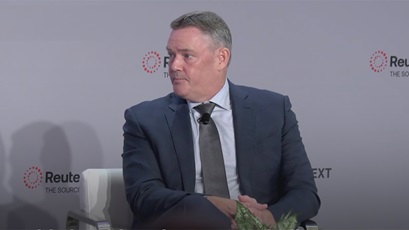emissions solutions
explainer: what is carbon intensity?
1 min read | november 22, 2022
Workers walk on a dirt road toward a wellhead in Greeley, Colorado.
Energy insiders often use the phrase “carbon intensity,” but for many of us it’s unfamiliar. Simply put, carbon intensity is a measure of carbon dioxide and other greenhouse gases (CO2e) per unit of activity, like generating a product.
more on that
Chevron’s upstream carbon intensity (UCI) metric is used to measure the emission intensity of oil and gas production.
- Our metrics are equity based, meaning they reflect our share of emissions from assets we own and operate as well as our nonoperated joint ventures.
- Our UCI is based on the amount of CO2e generated in the production process through to our point of sale.
what we’re working on
To date, we have identified nearly 100 potential projects to further lower our greenhouse gas intensity.
- In 2021, we made progress on 36 of them, completing five.
- For 2022, we earmarked more than $300 million on similar projects and anticipate an approximately $2 billion total spend through 2028.
Read more in Chevron’s 2021 Climate Change Resilience report.
topics covered
related content
-

 biodiesel helps cities lower emissions
biodiesel helps cities lower emissionsemissions solutionsfebruary 04, 2025
-

 chevron CEO discusses the future of energy
chevron CEO discusses the future of energyemissions solutionsjanuary 20, 2025
-

 novel ideas, established companies key to advancing lower carbon tech
novel ideas, established companies key to advancing lower carbon techemissions solutionsjanuary 14, 2025
-

 chevron CEO talks growing production, efficient spending
chevron CEO talks growing production, efficient spendingemissions solutionsdecember 18, 2024
chevron email updates
Subscribe to our newsletter to receive news and updates.



